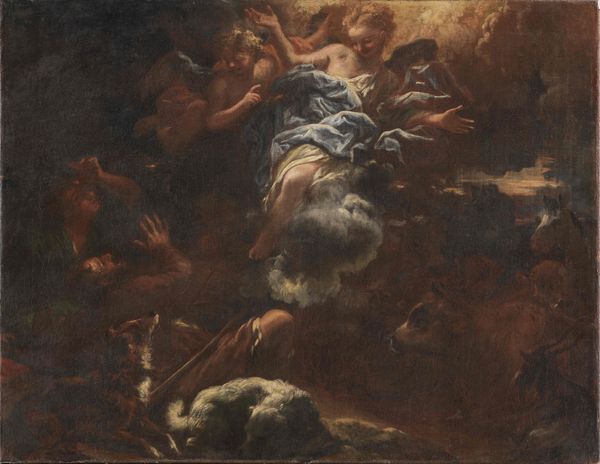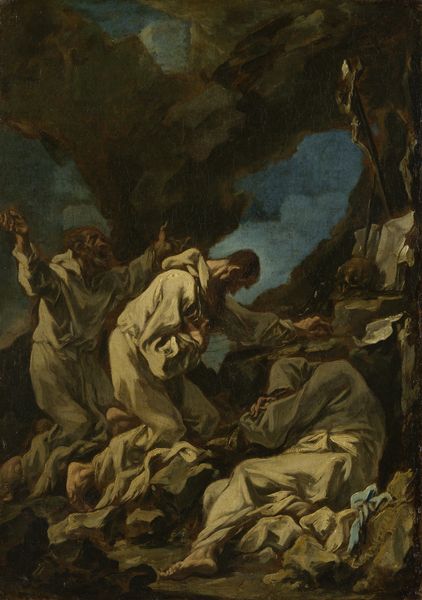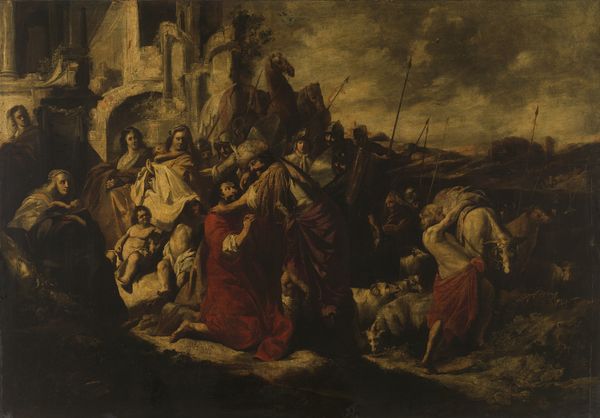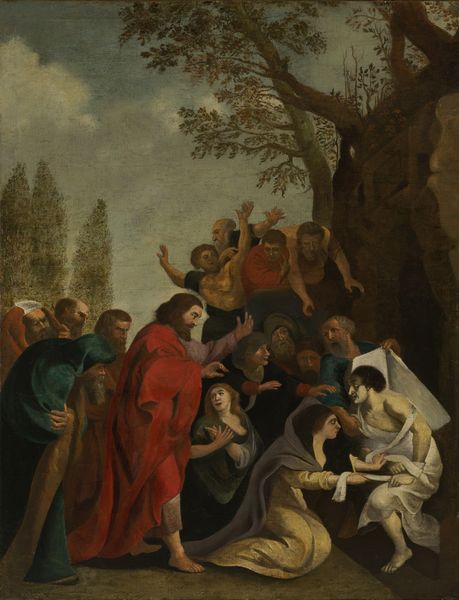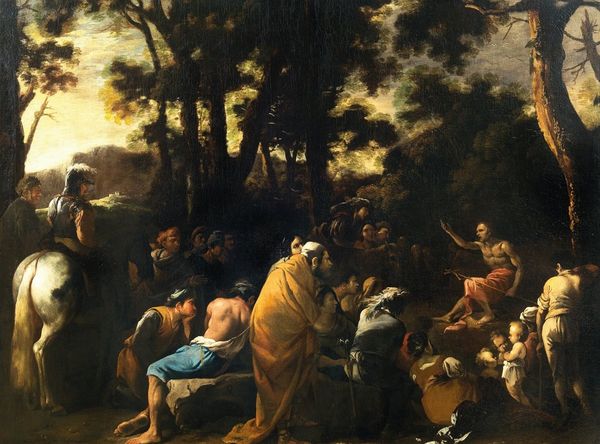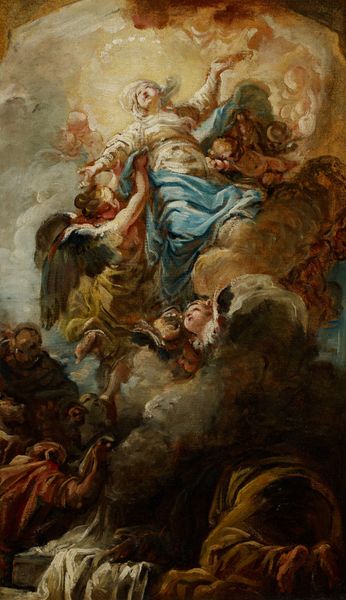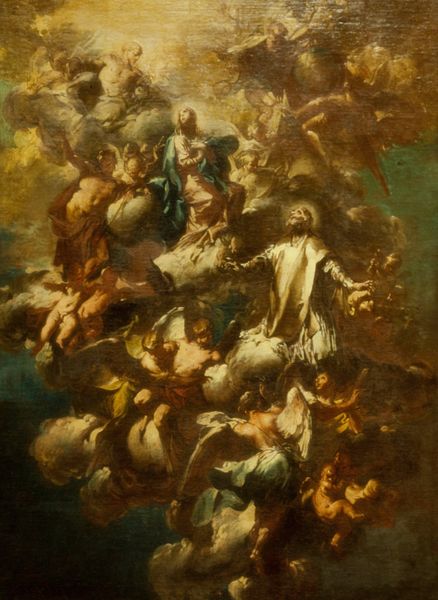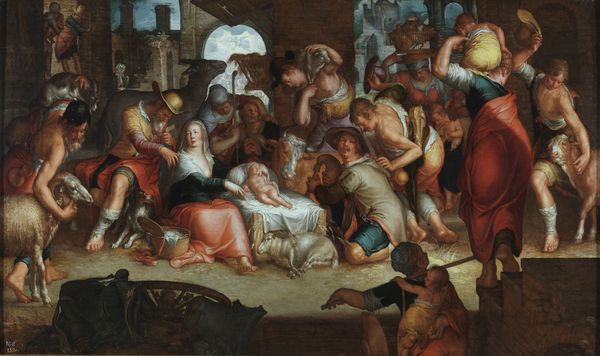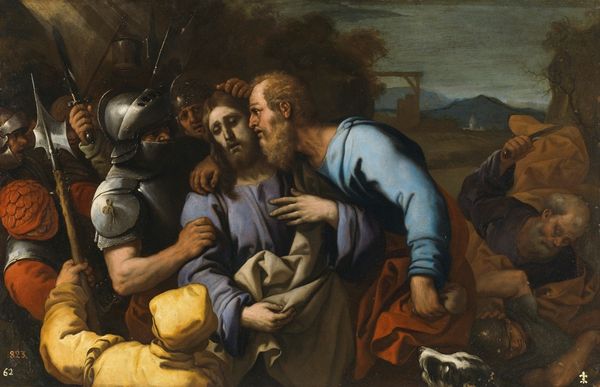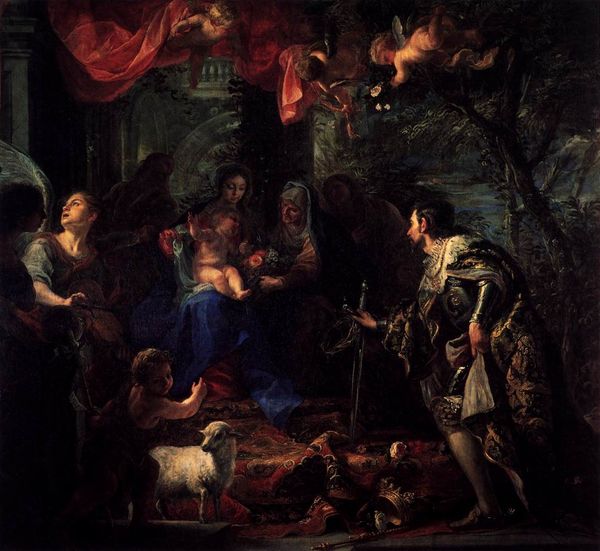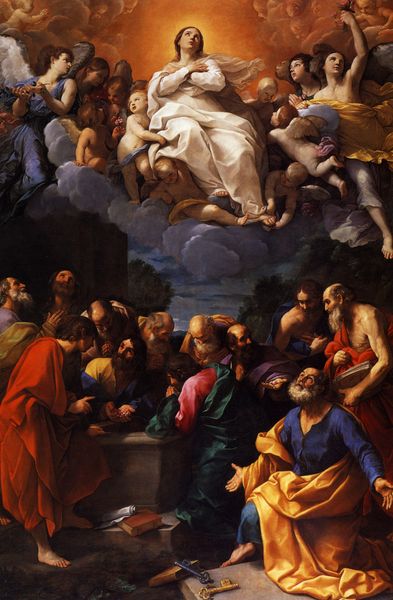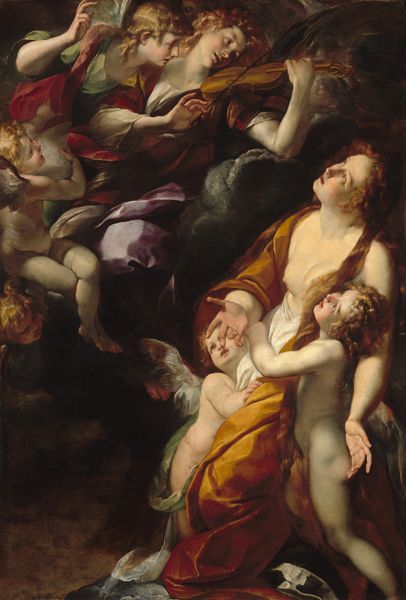
painting, oil-paint, canvas
#
allegory
#
baroque
#
fantasy art
#
painting
#
oil-paint
#
fantasy-art
#
figuration
#
canvas
#
history-painting
Dimensions: 73 cm (height) x 60.5 cm (width) (Netto)
Curator: We’re looking at Girolamo Troppa’s “The Dream of Jacob,” an oil on canvas from around 1665-1668, housed here at the SMK. The composition alone makes it appear as a glimpse into another realm, or maybe even somewhere familiar in the folds of our imagination. Editor: The immediate impression is one of ascension and revelation. Jacob sleeps soundly, dwarfed by a sky teeming with ethereal figures, an allegory conveyed using material elements of canvas and paint. The labor inherent in building up layers of pigment must’ve been extensive. Curator: Troppa has masterfully captured the biblical scene of Jacob's dream, emphasizing the ladder reaching to heaven, populated with angels. Ladders often act as links to the heavens, don't you think? These angels, recurring visual motif in religious narratives, promise divine intervention, a message rendered in strokes of oil paint. Editor: Speaking of production, the type of canvas used, the pigments available in Rome at that time—those material factors also shaped the very image and it’s perceived religious intent. Look at the shadows: a mix, perhaps, of lead white with yellow ochre and charcoal black for deep shadow definition. What kind of statement might this pigment say about 17th century commerce and trade routes? Curator: Intriguing question. Returning to the imagery, God the Father floats atop, bathed in golden light—the ultimate patriarch. What stories have the symbols within these compositions repeated across generations? How has each generation contextualized them through lenses like politics, culture or even geography? Editor: I'd love to know more about who prepared the canvas. Was it Troppa himself, or was there someone else handling the physical support before paint even touched the surface? The consumption habits and economic structures of 17th-century art must have a hand in how Troppa communicates, as a material process. Curator: An insightful viewpoint. This painting then isn't simply a static artwork, but evidence of that entire ecosystem that enables these materials to carry messages beyond their simple composition. Editor: Exactly! Considering all these different facets adds a dimension that moves the reading of “The Dream of Jacob” to another realm of thought altogether, so to speak!
Comments
No comments
Be the first to comment and join the conversation on the ultimate creative platform.
